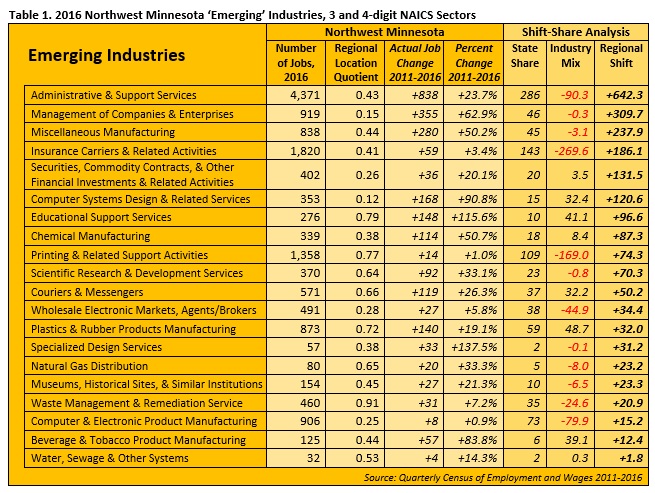 The presence of such industry powerhouses as Polaris, Arctic Cat and New Flyer make Northwest Minnesota a hub of transportation equipment manufacturing.
The presence of such industry powerhouses as Polaris, Arctic Cat and New Flyer make Northwest Minnesota a hub of transportation equipment manufacturing.
From wheat and potatoes to soybeans and sugar beets, the region is a major producer and processor of food staples and specialty agricultural products.
Want the freshest data delivered by email? Subscribe to our regional newsletters.
7/17/2017 12:04:56 PM
Chet Bodin
Through the #InnovateMN campaign, DEED has highlighted the contributions of Minnesota's innovation economy and connected the next generation of entrepreneurs to available resources. In this blog post, we acknowledge the businesses and organizations shaping the economic future and adding viability to the regional job market. Continuing our recent analysis of industry clusters in Northwest Minnesota, this month's post looks closer at 'emerging' industries in our region.
Innovation may not be the only reason these industries are blossoming in Northwest Minnesota, but it certainly plays an important role. A variety of employers, including those in manufacturing, transportation, and corporate management are using innovative techniques and technology to increase capacity and add employment.
As described last month, determining industry clusters in a regional economy has been an important tool of regional planners and policy makers for decades. Regional industry clusters show communities the nuance of their economies, identify economic changes, and even suggest how a community might adapt to them. In particular, the Blakely and Green-Leigh quadrant method (Figure 1) clusters industry sectors by how well they withstand economic fluctuation. This method is unique in that it offers a matrix of sustainability, categorizing regional industries by their adaptation to economic change over time.
In this method, regional industries are grouped into four quadrants: transforming, growing, emerging and declining, based on both the local concentration of, and competition for, employment from 2011 to 2016. The combined analysis of these two factors produces a more detailed approach to industry clusters, rather than those produced by supply chain models or employment concentration alone. For example, regional planners may be interested to know that, despite a low concentration of jobs in Northwest Minnesota, the Computer and Electronic Product Manufacturing has had significant, locally-driven employment gains since 2011, landing it in the 'emerging' quadrant cluster.

Innovation in Minnesota offers an ideal platform to highlight the "emerging" quadrant. Viewed by location quotient, these industries do not appear to be influential in Northwest Minnesota – but something is happening within them that demands attention.
Market forces, including innovative technology and practices, have made them locally competitive, and an important part of the region's economic future. 'Locally competitive' is determined by dissecting employment growth with shift-share analysis. In this case, regional employment changes are compared against those at the state level. While 'emerging' industries are not typically large sources of regional employment, their employment growth from 2011 to 2016 was often greater than the state and industry average. Table 1 outlines the 3 and 4-digit NAICS sectors that meet this criteria.

Communities in Northwest Minnesota may seek to understand how innovation is addressing the unique social and economic challenges they face. In particular, workforce innovation improves the regional economy by helping residents improve their skills, and generate solutions at home and work. Though relatively small, these 'emerging' industries may hold one key to helping the region continue to prosper.
Companies such as ATEK Access Technologies, an electronics manufacturer near Brainerd that designs data sharing technology and products, lead through technical and workforce innovation that helps the region maintain a competitive edge. "We are constantly seeking and developing employees with new and innovative skills, who are encouraged to take risks and drive the industry forward," said Vice President Julie Mork.
For regional planners, this is an important point. Weathering economic change means supporting local workers who reshape the regional economy by constantly developing their skillsets. As a result, workforce innovation improves the sustainability of jobs and communities, diversifies the economy and builds for tomorrow.
Contact Chet Bodin at chet.bodin@state.mn.us.